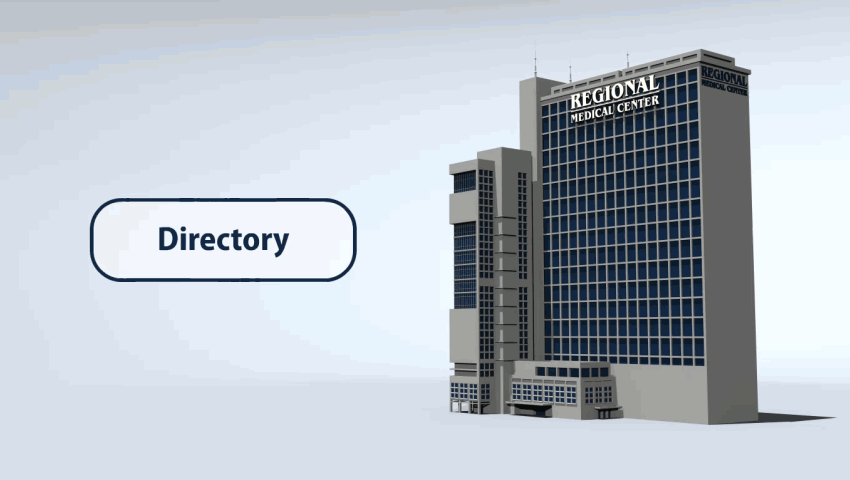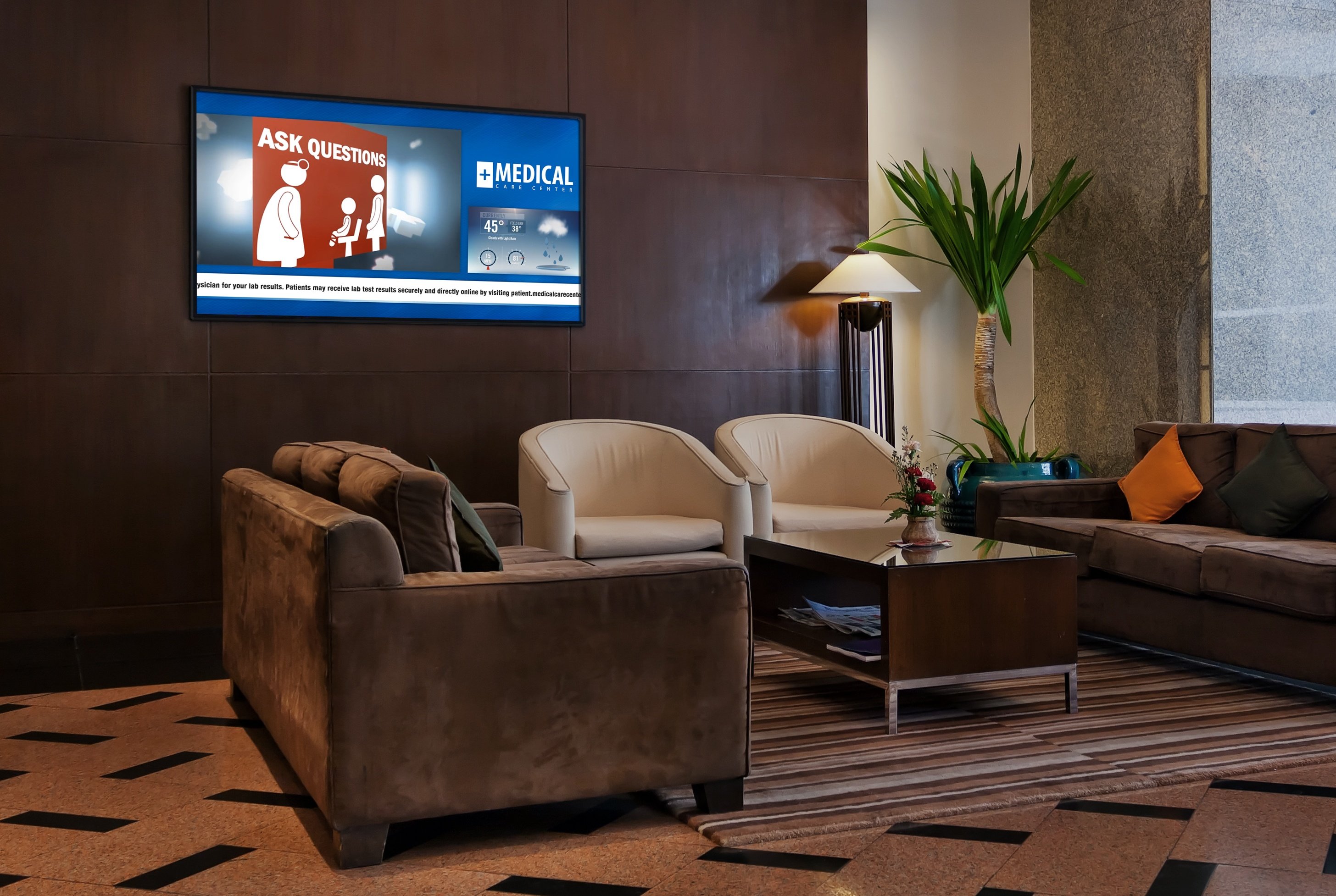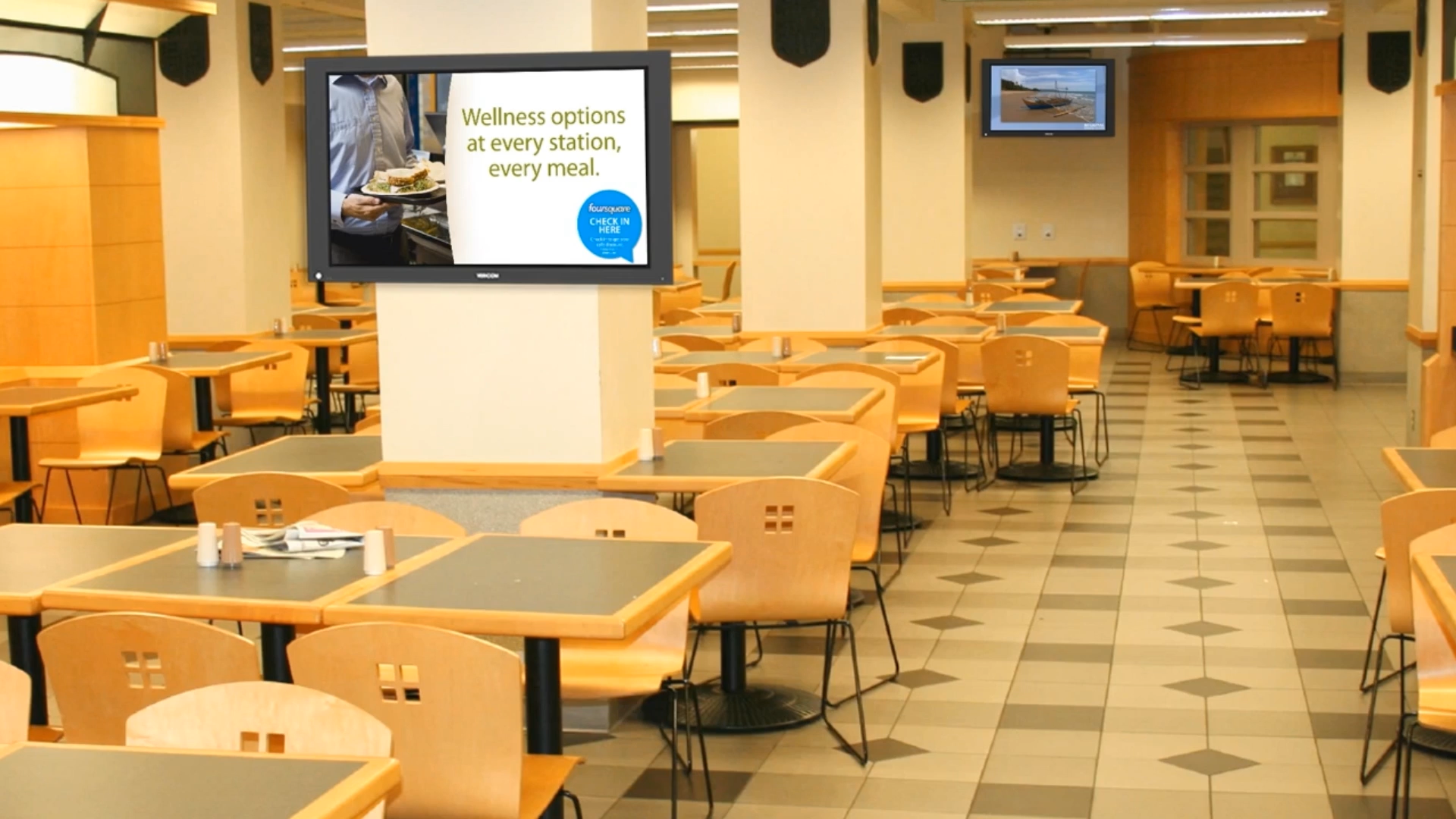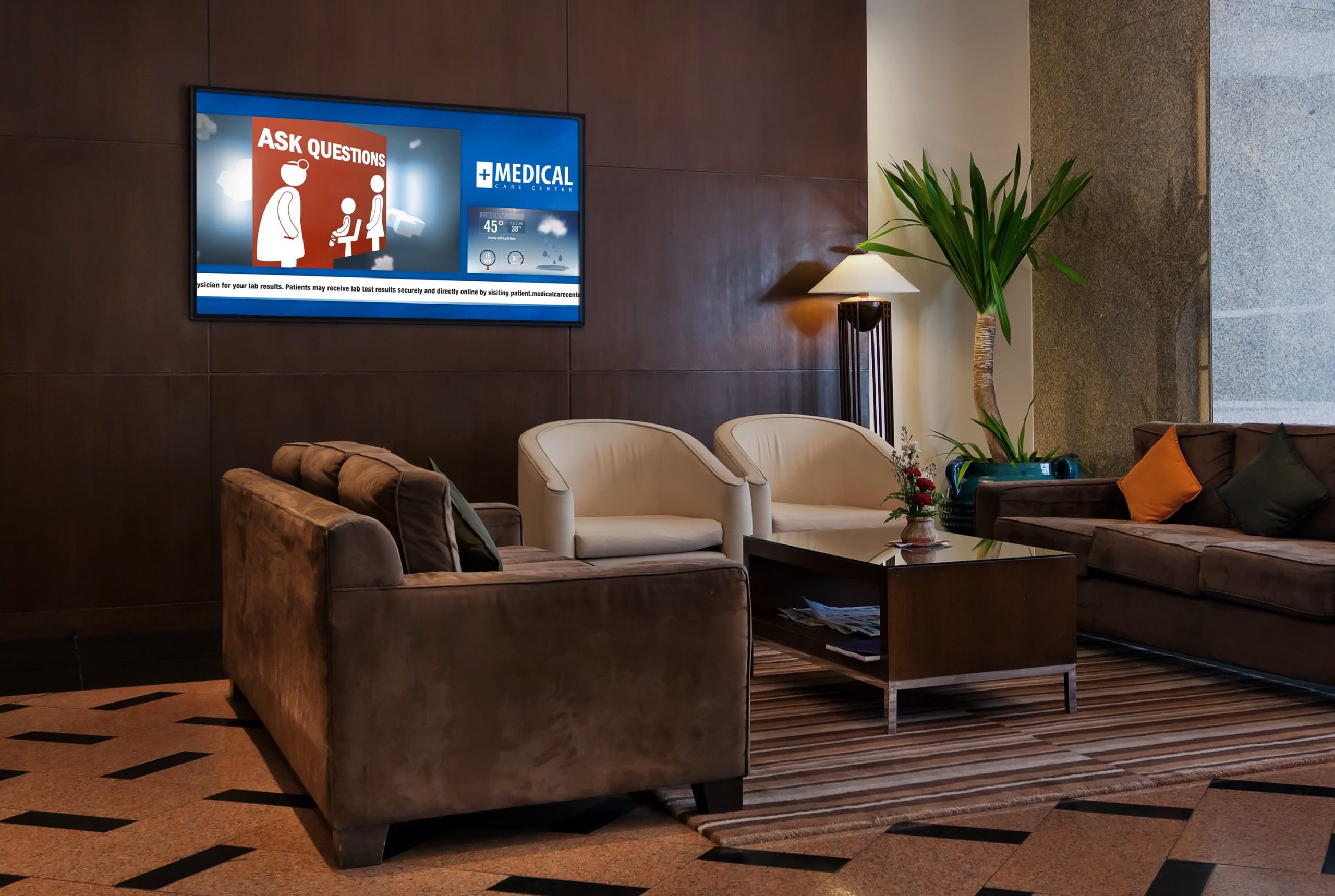What if you could upgrade the professional appearance of your medical practice, increase patient satisfaction, improve the quality of care, empower your employees, and save money all at once?
You’d jump at the opportunity, right?
So, why haven’t you added digital signage to your healthcare practice?
Digital signage offers multiple ways to improve your location and stand out from competitors, all while better serving your patients, employees, and practice. The uses and implementation of this technology are varied and customized to fit your unique location, but using digital signage in healthcare offers at least five fundamental and powerful ways to benefit your practice or facility.
1. Wayfinding & Directories
 Digital signage provides an excellent experience for your patients and their loved ones as soon as they arrive at your location through the application of digital wayfinding maps and directories.
Digital signage provides an excellent experience for your patients and their loved ones as soon as they arrive at your location through the application of digital wayfinding maps and directories.
When these tools are installed at the entrance of a building, visitors can quickly locate their intended destination. This is an extremely useful tool for large medical facilities that house multiple offices or have a complex layout.
Patients will arrive at their location faster which will decrease the number of late arrivals. Visitors will be less stressed when attempting to locate a loved one in the facility. And, guests for events, lectures, and specials events won’t be left to wander through hallways.
Even more, digital signage allows you to revise maps and directories in real-time.
So, if a physician changes offices or a section of your facility is closed, you can seamlessly update your information — without spending money on new signage or using unappealing black marks and tape to cross-out invalid information.
2. Check-In Assistance
Digital signage can further welcome patients and guests into a facility by providing an interactive check-in system.
From sit-down and desktop kiosks to pedestals and tablets, digital check-in tools come in multiple formats and serve a variety of purposes.
Patients can use digital check-in tools to:
-
check in and let the office know they have arrived
-
update record information
-
schedule and confirm future appointments
-
check the status of a bill or invoice
-
pay a bill
-
print an appointment reminder, receipt, health information, etc.
Digital check-in tools increase the speed of patient intakes, decrease patients wait-time, improve patient satisfaction, and lessen the amount of human resources needed to assist patients.
But remember — check-in kiosks are meant to support staff, not replace staff. And, all digital check-in tools must be made compliant with HIPAA rules and regulations and set to meet or exceed ADA recommendations. Work with a digital signage provider who can help you meet these regulations.
3. Waiting Room Entertainment & Information
Using digital signage to provide entertainment in a waiting room helps to decrease a patient’s perceived wait time.
Through private label television, custom videos, and live weather and social media streams, digital signage programming can be customized to match the interests and demographics of your patients.
In addition to entertainment, digital signs can also share useful information. Signage can:
-
Show wait times. Patients are less frustrated by waiting when they know how long they must wait.
-
Enhance preventative care initiatives. Programming can educate patients on how to improve their health.
-
Explain what to expect during the appointment or visit. This can help to calm nerves and allow patients to better prepare for their exam.
-
Introduce aspects of your facility that patients may not be aware of. If you offer preventative care option, health care programs, and/or additional services, use signage to share the information with your patients.
-
Provide information about your location. Tell patients where they can find the cafeteria, restrooms, private waiting areas, and important offices they made need within the facility.
-
Promote referral programs. Remind patients of the benefits they receive if they refer family and friends.
-
Display customer and patient testimonials. This helps to establish your office as a trustworthy healthcare provider.
-
Introduce and highlight staff members. By featuring staff who have done an exceptional job, won an award, or will be working with your patients, you will highlight the quality of care and make patients more comfortable when they meet the staff.
-
Recognize donor or fundraising events. Highlight the events and people that have helped provide your facility and patients with resources.
4. Exam Room Information & Entertainment
Like digital signs in the waiting room, interactive media in the waiting room can serve to both entertain and educate patients.
Screens with custom programming and private label TV can be placed in private exam rooms where patients wait during their treatment or for their physician. The screens can also serve a double benefit to patients by delivering information related to their treatment and/or condition.
Doctors can use interactive digital signage and custom videos to communicate with patients and share critical information. When visuals are used, patients absorb and retain content faster and longer.
Using digital media with graphics and videos can improve your ability to effectively communicate with and educate your patients.
5. Staff Training and Communication Tools

Using digital, interactive boards as education and communication tools works for patients and staff alike.
Because people have the ability to process information faster when data is delivered through visuals, digital signage is a useful communication and training tool for staff.
Employees can use digital dashboards to display and quickly share important information with each other such as patient and room status — expediting and streamlining patient care. And, training teams can use digital platforms to create training materials that educate new staff and provide continuing education to seasoned staff — improving the quality and consistency of care.
Digital signage benefits healthcare providers, patients, and employees. It is a powerful way to improve your facility and is easy to integrate into your office.
But if you still can’t visualize how this technology can work for your office, one of our Spectrio specialists will help advise you on the best ways to incorporate digital signs into your healthcare practice.
